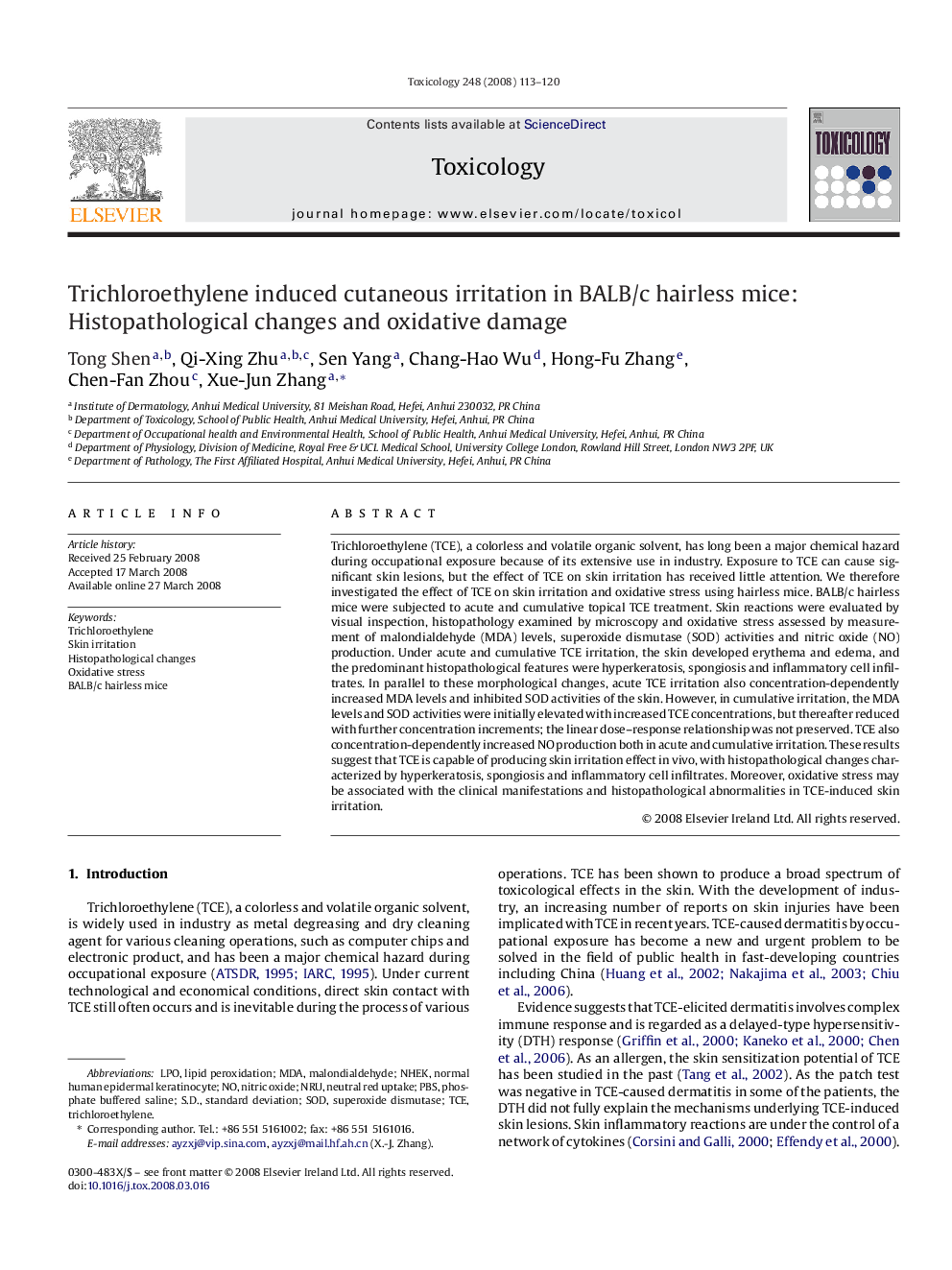| Article ID | Journal | Published Year | Pages | File Type |
|---|---|---|---|---|
| 2597190 | Toxicology | 2008 | 8 Pages |
Trichloroethylene (TCE), a colorless and volatile organic solvent, has long been a major chemical hazard during occupational exposure because of its extensive use in industry. Exposure to TCE can cause significant skin lesions, but the effect of TCE on skin irritation has received little attention. We therefore investigated the effect of TCE on skin irritation and oxidative stress using hairless mice. BALB/c hairless mice were subjected to acute and cumulative topical TCE treatment. Skin reactions were evaluated by visual inspection, histopathology examined by microscopy and oxidative stress assessed by measurement of malondialdehyde (MDA) levels, superoxide dismutase (SOD) activities and nitric oxide (NO) production. Under acute and cumulative TCE irritation, the skin developed erythema and edema, and the predominant histopathological features were hyperkeratosis, spongiosis and inflammatory cell infiltrates. In parallel to these morphological changes, acute TCE irritation also concentration-dependently increased MDA levels and inhibited SOD activities of the skin. However, in cumulative irritation, the MDA levels and SOD activities were initially elevated with increased TCE concentrations, but thereafter reduced with further concentration increments; the linear dose–response relationship was not preserved. TCE also concentration-dependently increased NO production both in acute and cumulative irritation. These results suggest that TCE is capable of producing skin irritation effect in vivo, with histopathological changes characterized by hyperkeratosis, spongiosis and inflammatory cell infiltrates. Moreover, oxidative stress may be associated with the clinical manifestations and histopathological abnormalities in TCE-induced skin irritation.
